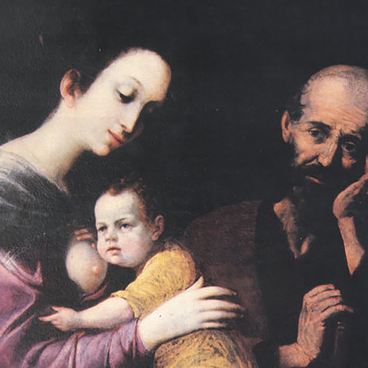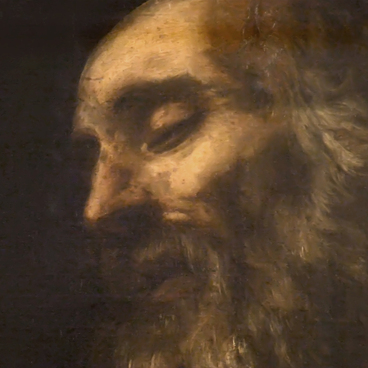Dutch floral still lifes can be identified by three main features: a contrasting dark background, an elegant floral composition, and great attention to detail.
Abraham Mignon studied painting from the age of seven, his first teacher was the still life painter Jacob Marrel. Together they moved to Holland, so Mignon became to be known as a Dutch artist of German descent. Floral still life painting remained the main genre in his work.
In the 17th century, many German artists studied abroad. The Thirty Years’ War ended in 1648 and split Germany into many small kingdoms, principalities and “free” imperial cities. Culture was in a deep crisis — there were no resources left for it in the devastated country. German painters left the country and joined the art schools abroad: Johann Liss and Adam Elsheimer went to Italy, Christopher Paudiss went to Holland, and Gottfried Kneller went to England.
“Still Life with a Cockatoo” is the earliest work of German painters in the collection of the Ulyanovsk Regional Art Museum. Previously, the painting was in the private collection of Ekaterina Maximilianovna Percy-French, the last representative of the Kindyakov noble family from Simbirsk. In 1918, the work was donated to the museum and became one of the most valuable exhibits in the collection of German art.
The splendor of the composition emphasizes the festive, baroque nature of the still life. The painting combines two genres of still life: the Dutch floral still life and the “breakfast” with fruit. The artist depicted lush flowers and southern fruit, as well as the moving figures of a cockatoo and a monkey. Mignon rarely painted animals — in this picture, they marked the fashion of that time. The 17th century was the golden age of navigation, and Holland was a strong maritime power. Ships brought exotic animals from the New World to entertain the European aristocracy, and the upper class commissioned artists to create relevant paintings.
Abraham Mignon studied painting from the age of seven, his first teacher was the still life painter Jacob Marrel. Together they moved to Holland, so Mignon became to be known as a Dutch artist of German descent. Floral still life painting remained the main genre in his work.
In the 17th century, many German artists studied abroad. The Thirty Years’ War ended in 1648 and split Germany into many small kingdoms, principalities and “free” imperial cities. Culture was in a deep crisis — there were no resources left for it in the devastated country. German painters left the country and joined the art schools abroad: Johann Liss and Adam Elsheimer went to Italy, Christopher Paudiss went to Holland, and Gottfried Kneller went to England.
Abraham Mignon studied in Holland under Jan Davidsz. de Heem, a master of floral still life. Mignon’s paintings display de Heem’s strong influence, and they are also strikingly similar to the paintings of their common student Elias van den Broeck. Mignon worked in Amsterdam, Frankfurt and Utrecht, where he died at the age of 39. His works are on display in the Hermitage, the Louvre and the Dresden Art Gallery.
“Still Life with a Cockatoo” is the earliest work of German painters in the collection of the Ulyanovsk Regional Art Museum. Previously, the painting was in the private collection of Ekaterina Maximilianovna Percy-French, the last representative of the Kindyakov noble family from Simbirsk. In 1918, the work was donated to the museum and became one of the most valuable exhibits in the collection of German art.
The splendor of the composition emphasizes the festive, baroque nature of the still life. The painting combines two genres of still life: the Dutch floral still life and the “breakfast” with fruit. The artist depicted lush flowers and southern fruit, as well as the moving figures of a cockatoo and a monkey. Mignon rarely painted animals — in this picture, they marked the fashion of that time. The 17th century was the golden age of navigation, and Holland was a strong maritime power. Ships brought exotic animals from the New World to entertain the European aristocracy, and the upper class commissioned artists to create relevant paintings.



